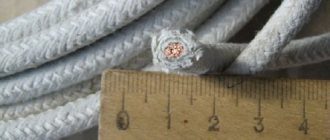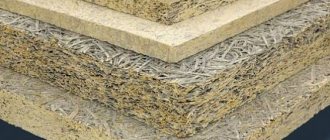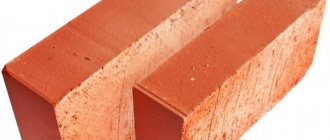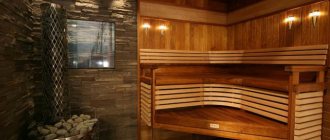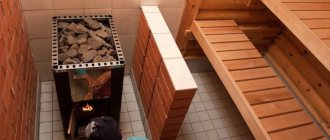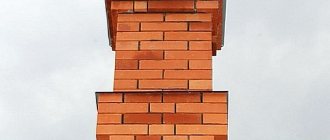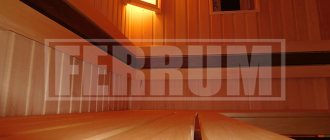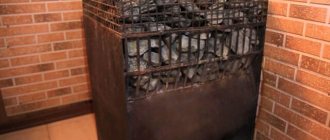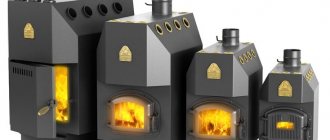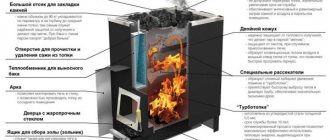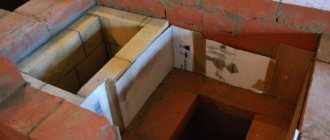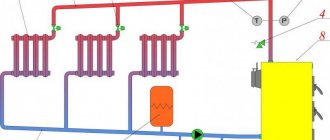You can find out what the temperature is in the oven using a device called a pyrometer. The temperature is different in different places of the oven. For example, the most incandescent is coal, which when burned can have a temperature of 850 degrees. The outer part of the oven can heat up to 120 degrees. However, there is a factor here - the material from which the stove is made. Above the fire door is the hottest place, since that is where the fire is located. The stove heats up to 600 degrees. Also, the temperature level also depends on what kind of fuel the stove is heated with.
However, there is such a type as high-temperature ovens. They are used in industries such as:
- Laboratory equipment
- Diagnostic equipment
- Test equipment
- Measuring equipment
Typically, such equipment is used in medicine, pharmacology and many other branches of modern science. (See also: Sitemap 2)
The temperature in such ovens reaches 1600 degrees Celsius. The materials for such a furnace are so durable that they can withstand such enormous temperatures.
Most of all stoves, no matter what they are in appearance, size and other features, are installed on the floor. This is the most convenient way, if, of course, we are talking about a real stove with fire. Fireplaces with imitation fire, that is, false fireplaces, can be built into the wall and even hung on the ceiling, but a real Russian stove can only be built on the floor.
In addition, to build a stove, you need to do a tremendous amount of work, take into account all the nuances, take into account safety precautions, think about where the draft is better, as well as which place is more convenient in order to make the house cozy and warm. (See also: Do-it-yourself oven in the yard)
Varieties of heat-resistant materials to protect walls from heat
Based on the type of raw materials that are used for the manufacture of heat-resistant materials, they are divided into:
- Materials with organic details, such as polystyrene foam boards. The fire resistance rating is not high enough, so it is used to protect against slight heat.
- Materials with inorganic components are used to insulate both wooden walls and concrete and brick walls. The following fire-resistant materials are used: stone wool, basalt slabs, fiberglass, fiber cement boards, polypropylene, honeycomb plastics, vermiculite panels, foamed perlite.
- Mixed materials include asbestos cardboard, asbestos-lime and silica refractories.
Most private houses are made of wood, be it a cylinder or frame house. Accordingly, in winter, in severe frosts, it is difficult without a stove or fireplace, so users approach the arrangement of such units responsibly and choose a heat-resistant material as the lining, which:
- will be effective and reliable protection against any fire;
- environmentally friendly, during the heating process it will not emit any harmful substances.
How to build a brick oven - nuances?
Experienced people suggest that it is best to hire a professional stove-maker for this purpose. But if you decide to do the stove masonry yourself, start with a project. It is important to provide for all the functions that you expect to receive from the stove: cooking, baking, keeping warm, sleeping place if necessary, etc. Provide detailed order. This will help you not only during the work process, but also in calculating building materials before purchasing.
Remember that a stove, like a house, needs a separate foundation, and it should not be connected to the foundation of the house. After the stove foundation has hardened well, lay the waterproofing and begin laying.
Protective screens
Protective fireproof screens are special fire-resistant decorative panels designed to insulate the side walls of furnace structures; they are mounted at a distance of 1-5 cm from the furnace body. The screen differs from a fire-resistant sheet in its multi-layer structure.
By using such heat-resistant insulation material, you can significantly reduce thermal radiation. Screens made of cast iron and stainless steel are widely popular.
The polished mirror surface of the steel screen reflects heat, which is characterized by softer flows. The plates located inside the screen are connected using heat-resistant mastic, mortar adhesive, and sealant, which are characterized by high heat resistance.
Heat-resistant mastic has a fire-resistant composition that can withstand high temperatures - 1100°C or more. In addition, it is not afraid of moisture, has bactericidal properties, and can be used as a cladding.
On the market you can find not only side screens, but also front ones. Installation of such devices is carried out by attaching them to the floor near the stove; the screen itself is equipped with special legs. In addition to steel and cast iron screens, quite often users also give preference to brick structures that look like walls. They separate the furnace body from flammable areas.
Protective screen
How to choose a good stove maker?
In rural areas, word of mouth works best. If you see your neighbor’s beautiful fireplace with a good hood or a multifunctional stove that copes well with many functions, you can safely ask the stove maker’s coordinates.
If you are a city resident and have purchased a country plot for the first time, found several stove makers through advertisements and are now choosing, then pay attention to the “portfolio”: modern stove makers photograph their work and are happy to tell in detail what kind of order it was, what nuances they had to deal with collide, and how they got out of the situation.
If the stove maker has specially studied his craft and even brought a diploma to the meeting, read the document - this is not a guarantee of a good stove, but, at a minimum, protection from profanity. Remember, however, that there are good stove makers without diplomas.
Kiln refractory bricks can be selected here >>
We have the best chimneys for your best stove here >>
Fireproof gypsum boards
These materials can be used as the main cladding of walls around well-heated stoves. And porcelain tiles of any color can be used as decoration.
This fire-resistant sheet material is characterized by the following properties:
- fire resistance parameter - up to 30 minutes of fire resistance;
- it will not ignite for another hour, even after the fire appears;
- dimensions: 120*250*1.25 cm;
- on the front and back sides there is cardboard treated with gypsum, inside there are fiberglass threads, they are responsible for resisting fire;
- the ends of the sheets are covered with cardboard material, along them there is a joining chamfer;
- Fastening can be done either with glue or with self-tapping screws.
Metal pipe: step by step process
In bathhouses with an installed heater, it is better to use brick chimneys, since refractory brick retains heat for quite a long time.
Many people wonder how to decorate the walls in the bathhouse near the stove, because these places also need protection.
Typically, sheets of asbestos or galvanized steel are used where the chimney comes into contact with the roof and ceiling.
Galvanized steel sheets are also used to protect walls near the stove.
A metal pipe without a heat-insulating layer is the most fire-hazardous option for arranging a chimney. In this case, there should be a distance of 60 cm, no less, between it and the nearest combustible elements.
The most popular and simplest option for pipe insulation is the use of heat-resistant insulation for its winding. Basalt wool is most often used as such insulation, which is protected on top with plaster or a metal sheet.
Isolation occurs as follows:
- The first step is to stock up on mineral wool slabs, the thickness of which should be more than 5 mm. Next, the insulation material is used to completely wrap the pipe. The insulation is secured with steel wire, which also needs to be wrapped around the pipe;
- On top of a pipe equipped with a heat-insulating layer, it is necessary to construct a reinforced mesh. Next, a cement-limestone mortar is made, with which the mesh is plastered;
- Instead of plaster, you can use a metal sheet.
To do this, you need to roll it around a pipe with insulation and rivet the edges at the fastening point.
Fireproof mineralite slabs
This material is characterized by high heat resistance and is made only from environmentally friendly substances:
- white/gray cement - up to 90% of the total material;
- mineral fibrous materials;
- Fibers reinforcing the slabs - give the slabs durability and strength.
The composition does not contain asbestos fibers, making these fire-resistant high-temperature boards suitable for home ovens. The slabs are quickly mounted on the wall using screws to the wall itself. To ensure higher reliability of the structure, you can install two sheets of minirite.
When installing, you need to leave a small distance, because When heated, the material may expand slightly.
Wall finishing with fire-resistant mineralite slabs
Functions and features of operation of a chimney in a bathhouse
The main purpose of a chimney in a steam room is high-quality and controlled removal of combustion products in order to completely eliminate the accumulation of harmful carbon dioxide and the formation of burning on surfaces. The resulting draft (with air suction into the combustion chamber) maintains a stable operation of the heat generator. By manipulating the flows, the user regulates the heating value of the furnace and fuel consumption. You can heat such a sauna stove for as long as you like, and you can steam all this time.
Important! The heater pipe gets very hot, so sometimes this energy is used to prepare water using tanks integrated into the design.
Features of heat distribution with different methods of connecting the heater to the chimney
The stove in the bathhouse is heated inconsistently. Accordingly, the smoke channel cools down completely between sessions, so the chimney parts experience the strongest repeated thermodynamic loads. The second important factor is operating temperature. Unlike boilers and furnaces used for heating, gases heated to 700 degrees or more are removed here. Direct-flow stoves are often used in the bathhouse; due to the lack of heating shields or water jackets that remove some of the heat, the smoke turns out to be so hot. Therefore, the problem of chimney burnout (the danger of gas contamination and fire) always remains relevant. Chimneys for bathhouse stoves are made from high-quality materials. If these are factory products, they must be approved by the manufacturer for such difficult operating conditions.
Important! The sauna stove pipes are routed through the ceilings or outside the building, along the facade. Having chosen the street version, which is easier to install, the channel is insulated along its entire length.
Protective stainless steel sheets
This material is not cheap, but it is very reliable. Using it, you can protect not only the walls of the house, but also the basement when installing a solid fuel heating unit.
In order to protect yourself and create maximum protection, special fiberglass with thermal protective properties is placed under the stainless steel. Such a design will cope well with the function of protection against the slightest attempt at fire. The choice of substrate should be approached very carefully; you need to thoroughly inspect the product for the presence of phenolic resins, which release harmful substances when heated strongly.
What stoves can be installed on the floor?
- Potbelly stoves
- B-B-Q
- Russian stoves
- Stoves and fireplaces
- Gas boilers
- Infrared ovens
In short, any stove can be placed on the floor. The main thing is that this floor is not a fire hazard, that there are no easily flammable objects nearby, and that there is no access to the stove for small children.
Subject to fire safety rules, any stove will be the main element of the interior of the house.
Fireclay fireproof boards
These materials include brick and mortar. Thanks to them, you can build a protective fireproof screen around the firebox and the body of the metal stove itself. The key difference between a brick screen and a lined one is that the liner is a protective casing that is installed flush against the walls of the structure.
Fireclay can withstand temperatures up to 1300°C. Currently, in addition to bricks and mortar, there is also fireclay coating, mastic, and glue, which can even be used during the operation of a stove or fireplace. They contain microscopic fireclay fibers and binding agents. They carry out lining of both the entire surface of the furnace and sealing of individual cracks. In addition, kaolin materials are produced for lining: paper, cardboard, cotton wool.
Fireclay fireproof boards
In two-story buildings it is allowed to provide two-tier stoves
with separate fireboxes and chimneys for each floor, and for two-story apartments - with one firebox on the ground floor. The use of wooden beams in the ceiling between the upper and lower tiers of the stove is not allowed. 6.6.6 In the buildings of secondary schools, preschools, medical institutions, clubs, holiday homes and hotels, stoves should be placed so that the fireboxes are served from utility rooms or corridors that have windows with vents and exhaust ventilation with natural impulse. 6.6.7 In buildings with stove heating, the following is not allowed: a) installation of artificially driven exhaust ventilation that is not compensated by artificially driven inflow; b) removing smoke into ventilation ducts and using smoke ducts for ventilation of rooms. 6.6.8
Stoves, as a rule, should be placed near internal walls and partitions,
providing for their use for placement of smoke channels. Smoke ducts may be placed in external walls made of non-combustible materials, insulated, if necessary, on the outside to prevent moisture condensation from the exhaust gases. If there are no walls in which smoke ducts can be placed, attached chimneys or mounted or root chimneys should be used to remove smoke. 6.6.9
For each furnace, as a rule, a separate chimney should be provided
or channel (hereinafter referred to as chimney). It is allowed to connect two stoves to one chimney, located in the same apartment on the same floor. When connecting chimneys, cuts should be provided in them with a height of at least 1 m from the bottom of the pipe connection. 6.6.10 The cross-section of chimneys (smoke channels), depending on the thermal power of the furnace, should be taken, mm, not less than: 140×140 - with a thermal power of the furnace up to 3.5 kW; 140×200 - with a thermal power of the furnace from 3.5 to 5.2 kW; 140×270 - with a thermal power of the furnace from 5.2 to 7 kW. The cross-sectional area of round smoke ducts must be no less than the area of the indicated rectangular ducts. 6.6.11 On the smoke ducts of a furnace operating on solid fuel, valves with a hole in them of at least 15x15 mm should be provided. 6.6.12
The height of the chimneys,
counting from the grate to the mouth, it should be taken at least 5 m. The height of chimneys placed at a distance equal to or greater than the height of the solid structure protruding above the roof should be taken: - at least 500 mm - above a flat roof; - at least 500 mm - above the roof ridge or parapet when the pipe is located at a distance of up to 1.5 m from the ridge or parapet; - not lower than the ridge of the roof or parapet - when the chimney is located at a distance of 1.5 to 3 m from the ridge or parapet; - not lower than a line drawn from the ridge downwards at an angle of 10° to the horizon, - when the chimney is located from the ridge at a distance of more than 3 m. Chimneys should be installed above the roof of taller buildings attached to a building with stove heating. The height of exhaust ventilation ducts located next to chimneys should be taken equal to the height of these pipes. 6.6.13
Chimneys should be designed vertical
without ledges made of clay bricks with walls at least 120 mm thick or from heat-resistant concrete with a thickness of at least 60 mm, providing in their bases and chimneys pockets 250 mm deep with cleaning holes, closed by doors. It is allowed to use chimneys made of asbestos-cement pipes or prefabricated stainless steel products (double-layer steel pipes with thermal insulation made of non-combustible material). In this case, the temperature of the flue gases should not exceed 300 °C for asbestos-cement pipes and 500 °C for stainless steel pipes. The use of asbestos-cement chimneys, as well as stainless steel, for coal-fired stoves is not allowed. It is allowed to provide pipe bends at an angle of up to 30° to the vertical with a distance of no more than 1 m; inclined sections must be smooth, of constant cross-section, with an area not less than the cross-sectional area of the vertical sections.
6.6.14 Chimney mouths should be protected from precipitation. Umbrellas, deflectors and other attachments on chimneys should not interfere with the free exit of smoke. 6.6.15
